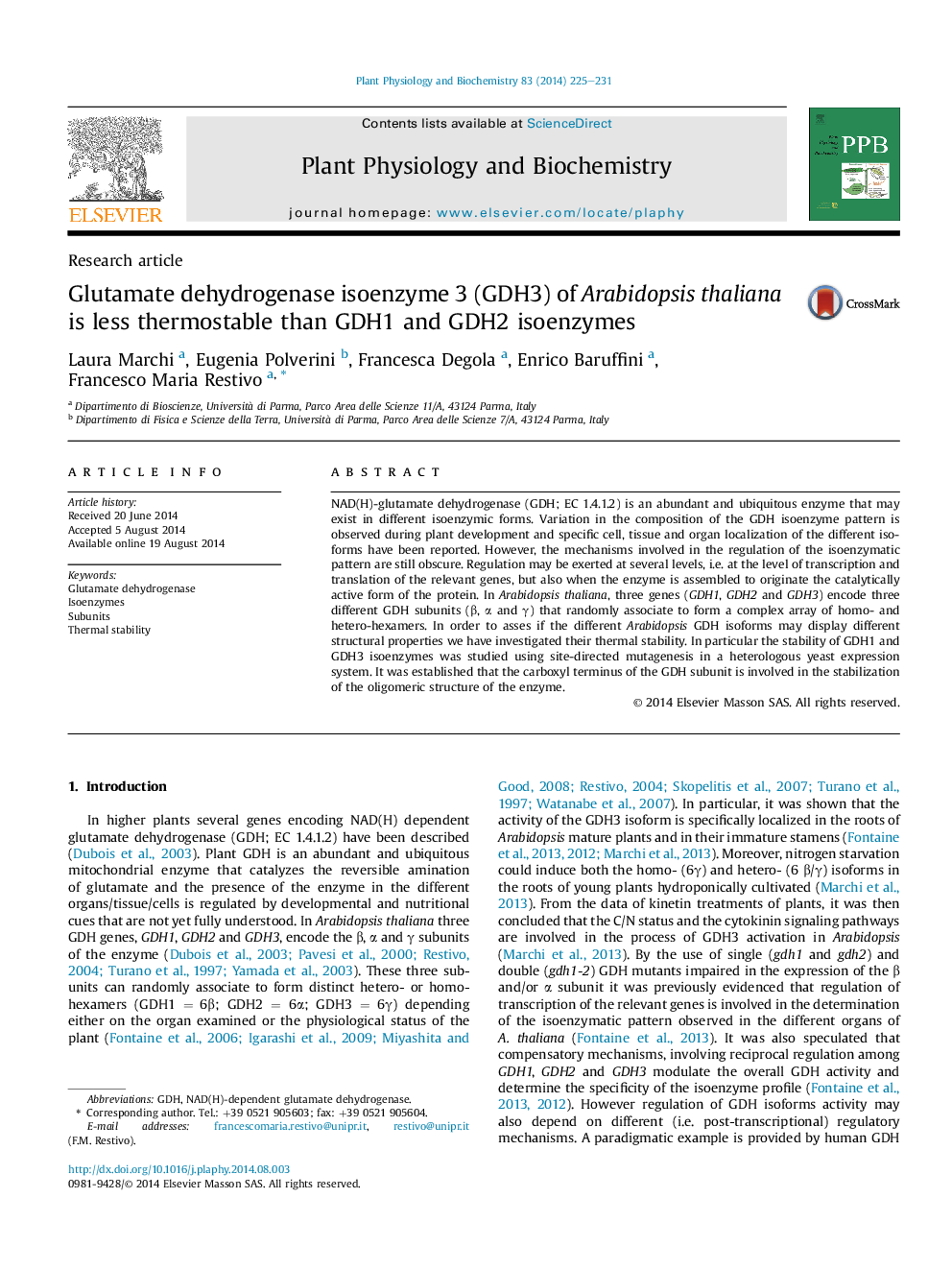| Article ID | Journal | Published Year | Pages | File Type |
|---|---|---|---|---|
| 2015775 | Plant Physiology and Biochemistry | 2014 | 7 Pages |
•Thermostability of different GDH isoenzymes was analysed.•Amino acid residues in the carboxyl end of GDH subunit were substituted.•Chimaeric isoenzymes were expressed in yeast cells.
NAD(H)-glutamate dehydrogenase (GDH; EC 1.4.1.2) is an abundant and ubiquitous enzyme that may exist in different isoenzymic forms. Variation in the composition of the GDH isoenzyme pattern is observed during plant development and specific cell, tissue and organ localization of the different isoforms have been reported. However, the mechanisms involved in the regulation of the isoenzymatic pattern are still obscure. Regulation may be exerted at several levels, i.e. at the level of transcription and translation of the relevant genes, but also when the enzyme is assembled to originate the catalytically active form of the protein. In Arabidopsis thaliana, three genes (GDH1, GDH2 and GDH3) encode three different GDH subunits (β, α and γ) that randomly associate to form a complex array of homo- and hetero-hexamers. In order to asses if the different Arabidopsis GDH isoforms may display different structural properties we have investigated their thermal stability. In particular the stability of GDH1 and GDH3 isoenzymes was studied using site-directed mutagenesis in a heterologous yeast expression system. It was established that the carboxyl terminus of the GDH subunit is involved in the stabilization of the oligomeric structure of the enzyme.
Graphical abstractFigure optionsDownload full-size imageDownload as PowerPoint slide
